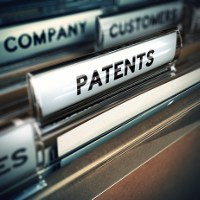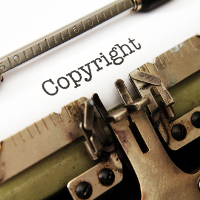The following post comes from Colin Kreutzer, a rising 2E at Scalia Law and a Research Assistant at CPIP.
 By Colin Kreutzer
By Colin Kreutzer
It’s been forty years since the Supreme Court ruled in favor of patentability for a GE scientist and the oil-eating bacterium he’d created, greatly expanding the scope of living matter that was eligible to be patented. Previously, patents on living things were limited to botanical inventions such as novel plant varieties, but the Court in Diamond v. Chakrabarty opened the door to genetically modified living matter. Writing for the majority, Chief Justice Burger held that because the bacteria were human-made and did not exist in nature, they fell under both the “manufacture” and “composition of matter” categories of invention per 35 U.S.C. § 101. The promise of IP protection for engineered microbial life gave a secure path to returns on investments, and it opened the floodgates to R&D in everything from life-saving drugs and cancer-screening tests, to Flavr Savr tomatoes and crop yields that promised to keep pace with a growing human population. The impact of this decision on biotech and related industries cannot be overstated.
But the legacy of Chakrabarty is still going strong. On Wednesday, June 17, CPIP and the Smithsonian’s Lemelson Center for the Study of Invention and Innovation jointly hosted a panel of experts to discuss the landmark ruling. Moderated by Lemelson Director Arthur Daemmrich and with closing remarks by CPIP Executive Director Sean O’Connor, the panel featured: Dan Charles, science writer, National Public Radio food and agriculture correspondent; Daniel Kevles, Stanley Woodward Professor Emeritus of History, History of Medicine & American Studies, Yale University; Jennie Schmidt, farmer, registered dietitian nutritionist, and blogger at The Foodie Farmer; and the inventor, Dr. Ananda Chakrabarty, now a distinguished professor of microbiology and immunology at the University of Illinois College of Medicine. The panel reflected on how the ruling in Chakrabarty has affected intellectual property and the biotech industry, and some of the issues that leave room for improvement. See the full video here.
History
In the early 1970s, Dr. Chakrabarty was working with several strains of naturally occurring Pseudomonas bacteria, known for their potential in cleaning oil spills. Each strain was able to break down one of the various hydrocarbon types found within crude oil. In theory, combining them could break down all the major components of an oil spill and convert them into benign materials, such as food for aquatic life. But there was a problem: simply mixing different bacterial strains did not achieve a complete oil consumption profile. Some strains would dominate the mixture because every strain thrived under slightly different environmental conditions, and much of the oil would be untouched.
Dr. Chakrabarty determined that the key elements in each bacterium were sets of extra DNA called plasmids. Each bacterial strain had different plasmids that would break down different hydrocarbons. He used a UV radiation technique to transfer plasmids from one strain to another until he had a single bacterial strain with a preferred set of plasmids. This unified strain could consume a wide hydrocarbon profile without developing a plasmid imbalance. The end product was distinct from any naturally occurring bacterium, and GE filed a patent application for the invention on June 7, 1972.
The USPTO examiner allowed some of the patent claims: namely, a method of producing the bacteria; along with, an inoculum having the bacteria as one component. But claims directed solely to the bacterium were rejected on the grounds that 35 U.S.C. § 101 does not allow pure living matter to be patented. Protections for plants, while alive, are granted under different statutes: the 1930 Plant Patent Act deals with asexually-reproduced novel plants, and the 1970 Plant Variety Protection Act grants similar rights on other selectively bred species. Following affirmation at the BPAI and a reversal at the Court of Customs and Patent Appeals, the Supreme Court granted certiorari. It heard the case on March 17, 1980, and issued an opinion on June 16, 1980.
Chief Justice Burger took issue with the Patent Office’s arguments that Congress, in drafting § 101, never gave express authorization to patent living things, and he didn’t see the plant exceptions as evidence that it never intended to. He countered that Congress had deliberately created a very expansive scope in § 101, and the Court was obliged to interpret it that way. The language was as clear as it was broad, and if the judiciary were going too far in its interpretation, the legislature would be free to correct the mistake. Further arguments, directed to the existential perils of genetic engineering, were met with similar skepticism.
Ultimately, the Chief Justice settled the argument in rather simple terms: that § 101 broadly covers a process, machine, manufacture, composition of matter, or collectively, “anything under the sun that is made by man.” Since Dr. Chakrabarty’s work fell within those boundaries, the subject matter was patent eligible—living or not.
Microbial Research
Dr. Chakrabarty and Daniel Kevles kicked off the discussion with a review of the scientific and legal history of the case. There was broad agreement among panelists that for microbial research, medicine, and the pharmaceutical industry, the ruling was a game-changer. Forty years ago, USPTO officials weren’t the only ones who believed that microbial lifeforms couldn’t be patented. Prof. Kevles, recounting a prior conversation with Dr. Chakrabarty, wondered if GE’s “patent everything” attitude and relative lack of biotech experience made it more willing to even attempt such a thing in an industry where many assumed it wasn’t allowed. Prof. Kevles also pointed to the precedential effect on contemporary developments, such as Stanford’s Cohen-Boyer recombinant DNA patents, which weren’t granted until after the Chakrabarty decision. And while the nation used the ruling to fuel an emerging industry, Dr. Chakrabarty (then a university professor) expanded his Pseudomonas research into treatments of cystic fibrosis and cancer cells.
Agriculture
Discussions of the state of agriculture were more mixed. Jennie Schmidt began with a big thanks for including a farmer’s voice on the panel. She spoke about several advancements that genetic engineering has brought to agriculture, and how they factored into her family business’ comprehensive farming approach, which include conventional and organic farming along with biotech. The adoption of biotech seeds has spread far more rapidly than the previous technological leap of hybridization in the 1920s and 1930s, and she deemed it essential to the survival of family farms in modern America. Biotech seeds are more resistant to herbicides, allow for the use of softer chemicals, and are better suited to no-till practices. Tillage, Ms. Schmidt noted, was a major cause of erosion and loss of sediment, phosphorus, and other nutrients to the nearby Chesapeake Bay. She also mentioned engineered products such as Bt-corn, which can reduce the need for pesticides that kill far more species than they target.
Dan Charles expressed concerns about the number of useable innovations in agriculture, compared to what had been promised in exchange for the added intrusion of corporate control into farming. He questioned how transformative GMOs have truly been by boiling the developments down to two major traits—herbicide resistance and pest resistance—and noting that pests already appear to be overcoming the latter. National Academy of Sciences studies, he said, had failed to identify any major difference in the crop yield trends between the pre- and post-GMO eras (likely referencing this study; see for example the summary at p.14).
Prof. Kevles conceded that he’d rather see more developments focused on increasing the vitamin and nutrient content of crops, rather than on sheer yields. To date, the bulk of the technological benefits have gone to reducing costs rather than to increasing consumer health. But he tempered this observation by putting it into the greater context of all genetic applications and emphasized the unquestionable impact that the Chakrabarty decision had on technology as a whole.
Ms. Schmidt also acknowledged Mr. Charles’s concerns and felt that things might be very different if the first GMO breakthroughs had been consumer-facing, rather than farm-facing, developments. She noted that IP issues have affected traditional farming practices such as seed saving, but she added that proprietary issues span the range of farming technologies and are not limited to biotech. She also pointed out that IP isn’t the only reason that seed-saving is a threatened practice: hybrid seeds, a long-established technology, are generally unsuitable for saving regardless of whether farmers may legally do so. Her farm still practices seed-saving when possible.
Mr. Charles agreed that the proprietary issues extend beyond biotech, and indeed pose problems for researchers wishing to access to the latest generation of seed technology, even for scholarly purposes. Further, he noted that decreasing access has led to problems of international agricultural cooperation.
On the subject of international issues, Dr. Chakrabarty stressed the importance of IP to developing countries in bringing their products to the market. He has been active for many years in advancing both biotech and IP as a means for less-developed nations to build wealth.
The State of R&D, Post-Chakrabarty
Another avenue of the discussion centered on the state of R&D then and now, in terms of large corporate laboratories versus the multitude of start-ups we often see today. Prof. Kevles was quick to point out that there is still a lot of research coming from the big firms, not only in chemistry and biotech, but also in the worlds of information technology and others. As far as the emergence of start-ups was concerned, credit also went appropriately to the Bayh-Dole Act. This helped universities retain IP rights to inventions that came from federally funded research and stimulated further growth of university tech transfer offices. The Chakrabarty decision and Bayh-Dole are both credited as significant events in the strengthening of America’s IP system.
Closing
Prof. O’Connor concluded with an in-depth explanation of the legal and scientific theories that separated the Chakrabarty decision from plant patents. He also addressed some of the fears that arise when discussing property rights on genetically engineered lifeforms. He emphasized that patent laws don’t grant the right to make or use something, but rather the right to exclude others from making or using it. As such, patent law can easily be superseded by other laws, such as those barring indentured servitude or the ownership of “all or part” of a human being. A more common example came from pharmaceuticals—a patent on a new drug is no good if the FDA won’t approve it.
Dr. Chakrabarty knows these problems all too well. Attendees asked him why his invention, the subject of the landmark ruling, didn’t itself go to market. It seems that IP wasn’t the only legal hurdle standing in the way of commercialization. Regulators were fearful of what might happen to the natural order if genetically modified bacteria were introduced into the ocean. Without sufficient data to prove that, for example, the engineered traits wouldn’t be acquired by harmful pathogens, they were unwilling to let it go forward.
The panel closed with a virtual exhibit presented by Smithsonian curator Peter Liebhold. He took panelists and attendees on a walk through the history of agricultural and genetic research, using a series of photos and artifacts that would have been shown in-person if COVID-19 hadn’t moved the program online. Hopefully, the biotech world, buoyed by a strong IP framework, will soon develop vaccines and treatments that can get us all back to normal.
The Chakrabarty case is a prime example of the vital role IP protection plays in fostering innovation and growth. It also serves as a reminder of why Congress intentionally granted such an expansive scope in 35 U.S.C. § 101: because it knew it wouldn’t be possible to envision the technology of the future, and it declined to stand in the way of whatever strange new wonders awaited the human imagination. CPIP is thrilled to have shared the stage with the Lemelson Center and the distinguished panelists as we observed the 40th birthday of this landmark ruling, and we wish to give a special thanks to Dr. Chakrabarty for joining us.
 What if there is a way for a patent applicant to obtain a “gold-plated patent” that is immune to administrative cancellation before the Patent Trial and Appeal Board (PTAB) at the U.S. Patent and Trademark Office (PTO)? This intriguing notion is the subject of a recent paper by Professor
What if there is a way for a patent applicant to obtain a “gold-plated patent” that is immune to administrative cancellation before the Patent Trial and Appeal Board (PTAB) at the U.S. Patent and Trademark Office (PTO)? This intriguing notion is the subject of a recent paper by Professor  By Yumi Oda
By Yumi Oda Here’s a brief excerpt of a post by CPIP Senior Scholar
Here’s a brief excerpt of a post by CPIP Senior Scholar  By Camilla Hrdy
By Camilla Hrdy